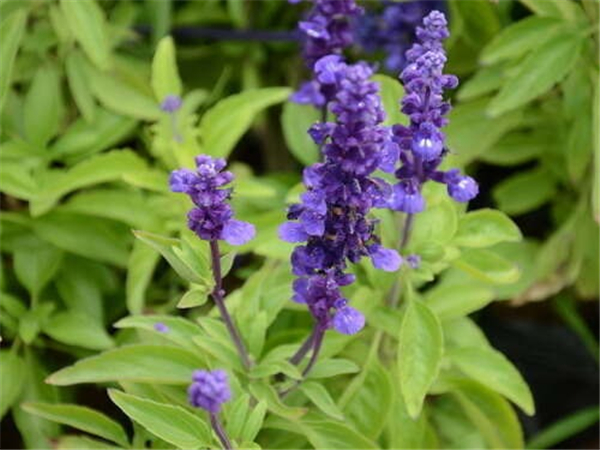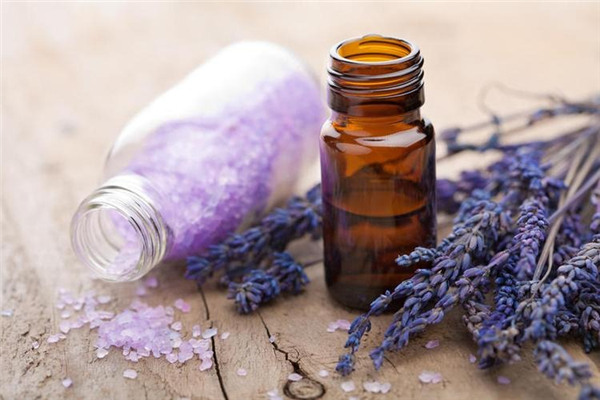Lavender is a plant of the genus Lavandula in the family Lamiaceae. Lavender essential oil can be extracted by distillation. The distilled liquid will be separated into layers. The oily substance on the upper layer is lavender essential oil, and the watery substance on the lower layer is lavender hydrosol.
Lavender hydrosol has excellent anti-inflammatory and bactericidal effects, and balances and adjusts the skin's oil secretion. It is very suitable for oily skin. After cleansing, it can replace toner. It can also promote cell regeneration, prevent acne and fade acne marks. It can also improve fragile and tired skin. It can also be used as floral water at home to treat mosquito bites.

The most popular hydrosol in the world is rose hydrosol. Lavender hydrosol is the second most popular hydrosol in the world. Its cultivation and development and application are very mature, and it is now cultivated on a large scale. It belongs to a large category of economic crops. Lavender is also widely planted in my country, especially in Yili, Xinjiang.
The simple and natural grass fragrance, lavender hydrosol has a strong floral fragrance, not as strong as lavender essential oil, but more herbal fragrance, which is easy to identify. Some people don't like the strong grass smell of lavender hydrosol. Lavender hydrosol is like walking in a farm in nature, which makes people completely relaxed and soothed. If there is a flowery fragrance in the cloudless sky on a summer afternoon, it is the fragrance of lavender hydrosol.
Essential oil: It is a volatile aromatic substance extracted from the flowers, leaves, stems, roots or fruits of plants by steam distillation, extrusion, cold soaking or solvent extraction. Essential oils are divided into diluted (compound essential oils) and undiluted (single essential oils). Essential oils are very volatile and will evaporate quickly once they come into contact with air. For this reason, essential oils must be stored in dark bottles that can be sealed. Once the bottle is opened for use, the lid must be put back on as soon as possible. Hydrosol: Hydrosol is the condensed water solution obtained by distillation of aromatic plants. During the distillation and extraction process, oil and water will separate. Due to different densities, essential oils will float on the surface, while water will settle below. This water is called hydrosol. In addition to a small amount of essential oil ingredients, hydrosol also contains all water-soluble substances in plants. Hydrosols with 100% plant water-soluble substances contain mineral nutrients (such as tannins and flavonoids) that are lacking in essential oils. Its low concentration characteristics make it easy to be absorbed by the skin. It has no fragrance or essential ingredients at all, and is mild and non-irritating. Hydrosols can be used daily, and can also replace pure water to prepare various facial masks.
Differences in usage: Lavender hydrosol can be applied directly to the face, but lavender essential oil cannot. All hydrosols can be applied directly to the face (except for extremely sensitive skin), and all essential oils cannot be applied directly to the face. They need to be diluted with vegetable oil before use. Differences in efficacy and use: Lavender hydrosol is generally used for facial acne removal, fading acne marks, soothing allergies, brightening skin tone, shrinking pores, etc. The usage is simple, and the effect is very good when applied directly or with a paper mask. Lavender essential oil is generally combined with vegetable oil, and is formulated into compound essential oils of different proportions according to different purposes of use. It is generally used for facial acne removal, fading acne marks, fading scars, treating burns and scalds, maintaining uterine gynecology, regulating insomnia and headaches, enhancing immunity, promoting body detoxification, regulating menstrual syndrome, etc., and the efficacy and use of essential oils will be more extensive. Lavender essential oil is one of the essential oils for home use and has a wide range of uses. Aromatherapy uses lavender essential oil to purify the air, sleep, and calm.
There are many types of lavender. The most commonly used and most widely used one is "real lavender", also called "real lavender", and there are other derivative varieties-eye-catching lavender, spike lavender, and head lavender. When buying essential oils, you must determine the variety. For general home use, real lavender is fine.
Lavender used for essential oil extraction - true lavender (Lavender fine), while tourists often see hybrid lavender (Lavender Clonal)
True lavender is propagated by seeds, while hybrid lavender is a hybrid of true lavender and spike lavender, propagated by cuttings. The yield and oil yield of true lavender are low, its medicinal value is high, and its price is also the highest; while hybrid lavender has a high yield and oil yield, and because of its poor oil quality, it is generally used for viewing and making spices.
We can also simply distinguish the two from the two aspects of appearance and fragrance: true lavender is single-branched, overall shorter, and has a sweet smell due to its higher ester content; while hybrid lavender has branches and a higher camphor content, so it does not smell as soft as true lavender, but more stimulating, with a slight grass or herbal fragrance.
The extraction of lavender essential oil mainly adopts distillation. After lavender is filled into a large pot, steam will come up from the bottom of the pot, and then lavender essential oil can be extracted. 15-20 kg of essential oil can be extracted from every 1,500 kg of lavender. The extracted essential oil removes the water produced by the steam, and the finished essential oil can be obtained. The filtered water is the pure dew commonly used in skin care.

Although lavender is now grown all over the world, it cannot be compared with French lavender in terms of market share and price. Today, France accounts for 90% of the world's lavender shipments, and the price is generally higher than other production areas in the world.
The gap is mainly reflected in the crude oil extraction and essential oil blending technology. Take the lavender grown in Xinjiang, my country. Although Xinjiang is similar to Provence in climatic conditions, it is immature in fine processing technology, unstable quality, and lacks in chemical indicators.
Differences in climate and soil will directly lead to different chemical compositions. For example, the lavender produced in Provence contains higher esters, which can reach 42-45%. It has a sweet smell and is better at soothing the mood than the UK, Bulgaria and other places. This is why essential oil brands from all over the world go to France to purchase lavender essential oil.
In addition, another reason why the price of French lavender essential oil remains high is the rising global demand for essential oils.
Some of these essential oils will be sold to brands, and the other part will become the raw materials for making perfumes. Since the 16th and 17th centuries, essential oils have been widely used in perfume making, and perfume has also been regarded as an art, and later separated into an independent field.
Today, although artificial fragrances have begun to enter the perfume industry in large quantities, there are still many precious perfumes that still use essential oils as raw materials.
Oleoresins Introduction
Stainless Steel Mixing Equipment Application
Plate Centrifuges Application
Contact: Project Manager
Phone: +86-18120438367
Tel: +86-18120438367
Email: info@tycoretech.com
Add: No. 1, Optics Valley Avenue, East Lake New Technology Development Zone, Wuhan, Hubei, China
We chat
